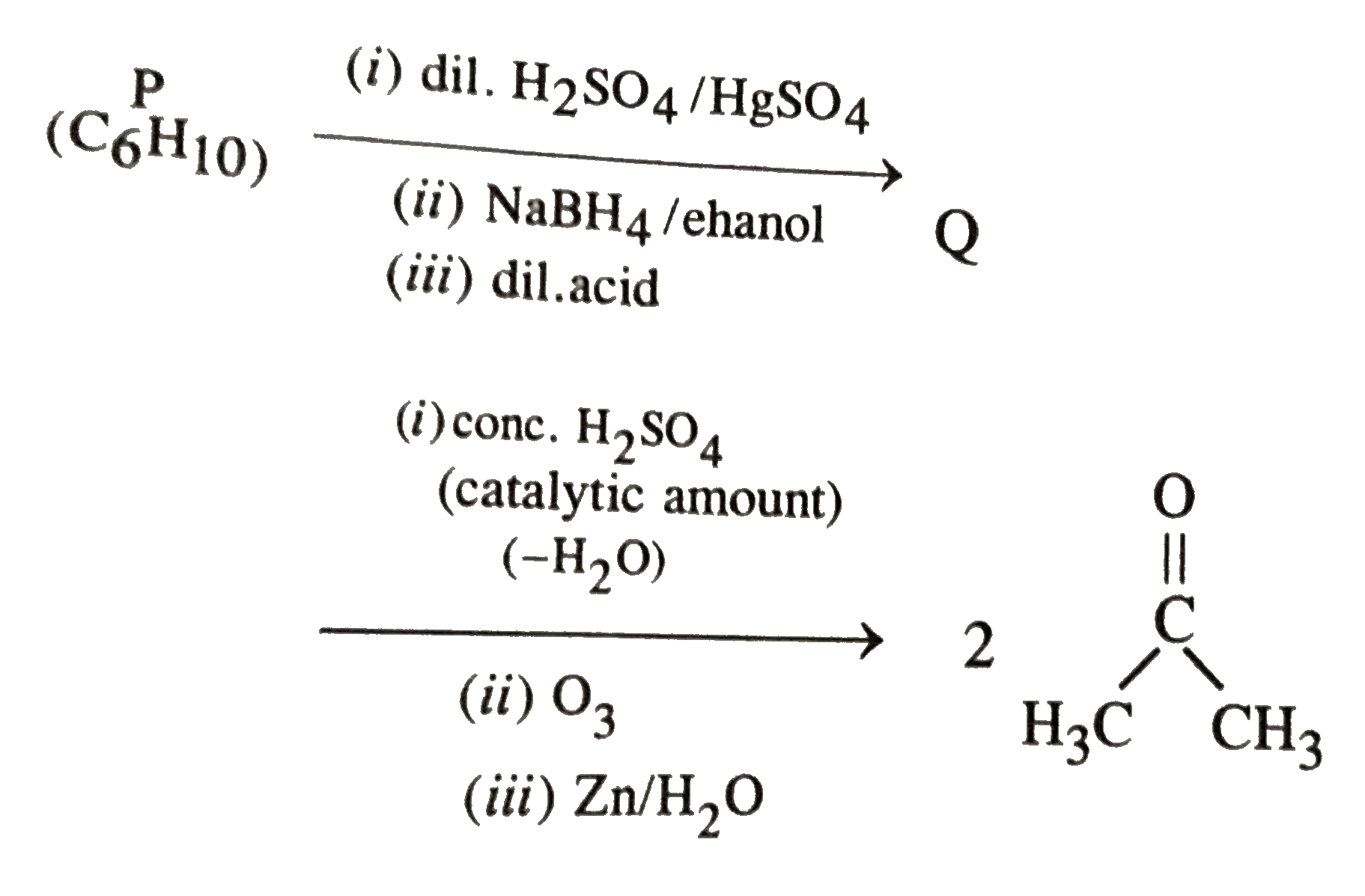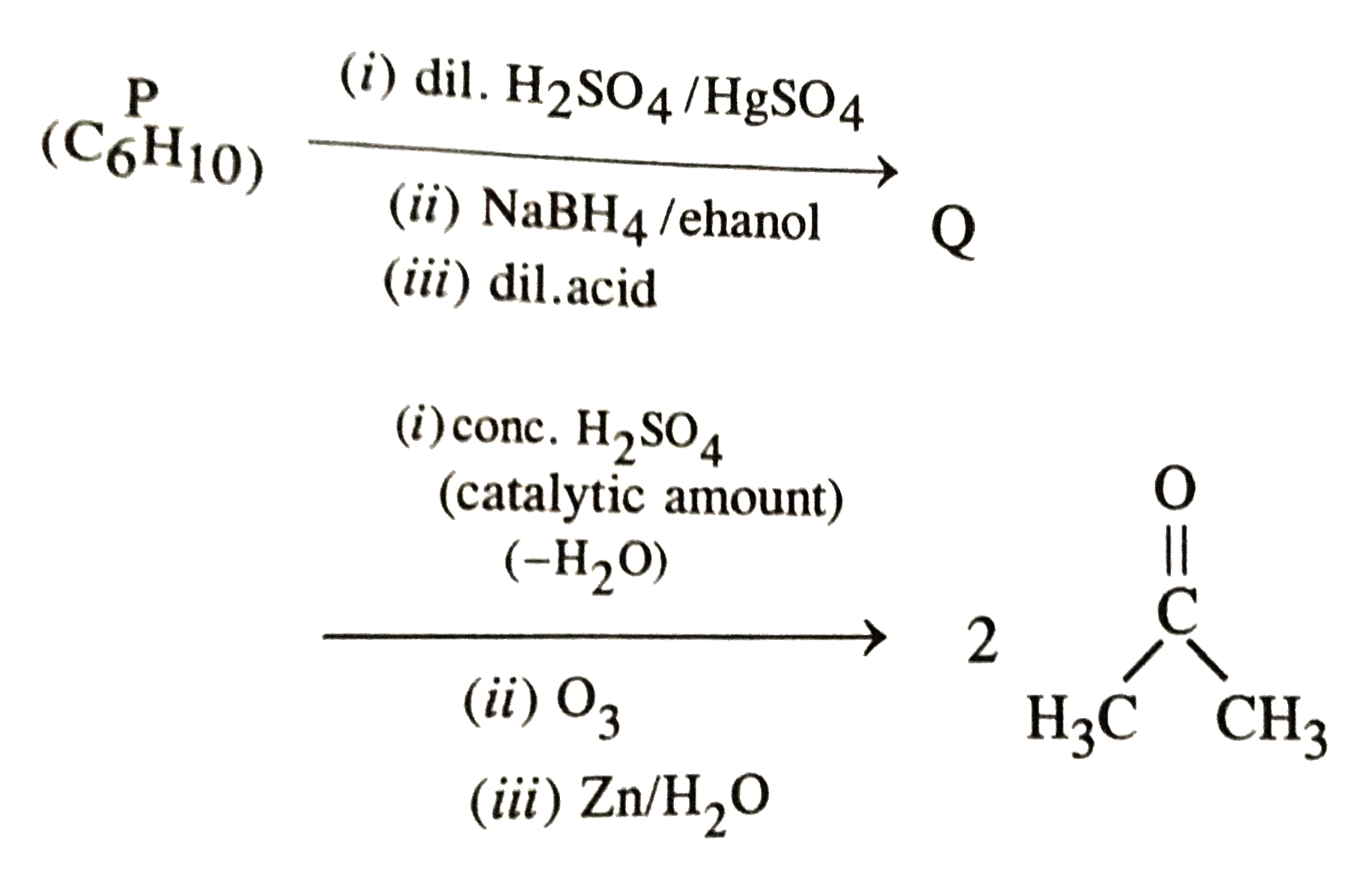A hydrocarbon of molecular formula C6H14 on monochlorination given two products Identify the structure of hydrocarbon.
To solve the question regarding the hydrocarbon with the molecular formula C6H14 that gives two products upon monochlorination, we will follow these steps:
Step 1: Understand the Molecular Formula
The molecular formula C6H14 indicates that we have a hydrocarbon with 6 carbon atoms and 14 hydrogen atoms. This fits the general formula for alkanes, which is CnH2n+2. Thus, we can conclude that the compound is an alkane.
Hint: Remember that the general formula for alkanes is CnH2n+2.
Step 2: Define Monochlorination
Monochlorination refers to the substitution reaction where one hydrogen atom in the hydrocarbon is replaced by a chlorine atom. The number of different products formed during monochlorination depends on the number of different types of hydrogen atoms present in the molecule.
Hint: Monochlorination leads to different products based on the types of hydrogen atoms available in the hydrocarbon.
Step 3: Identify the Types of Hydrogen Atoms
Since the question states that two products are formed, this implies that there are at least two different types of hydrogen atoms in the hydrocarbon. If all hydrogen atoms were equivalent, only one product would be formed.
Hint: Look for structural arrangements that provide at least two different types of hydrogen atoms.
Step 4: Consider Possible Structures
1. Straight-chain Alkane: If we consider a straight-chain alkane (like hexane), all hydrogen atoms would be equivalent, leading to only one product upon chlorination. Thus, a straight-chain structure is not suitable.
2. Branched Alkane: If we consider branched structures, we can have different types of hydrogen atoms. For example, 2,3-dimethylbutane has two types of hydrogen atoms: those on the terminal methyl groups and those on the methylene groups.
Hint: Explore branched structures to find variations in hydrogen atoms.
Step 5: Draw the Structure
The structure of 2,3-dimethylbutane can be represented as follows:
CH3|CH3−CH−CH−CH3|CH3
In this structure, the hydrogen atoms on the two different types of carbon (the central carbon and the terminal methyl groups) are different.
Hint: Sketch the structure to visualize the different types of hydrogen atoms.
Step 6: Predict the Products of Monochlorination
When monochlorination occurs:
- Chlorination of the hydrogen on the terminal methyl group (CH3) will yield one product.
- Chlorination of the hydrogen on the central carbon will yield a different product.
The two products formed will be:
1. Product A: CH3-CH(CH3)-CH2Cl-CH3
2. Product B: CH3-CHCl-CH(CH3)-CH3
Hint: Identify which hydrogen atoms are replaced by chlorine to determine the products.
Step 7: Name the Hydrocarbon
According to IUPAC nomenclature:
- The longest carbon chain has 4 carbons (butane).
- There are two methyl groups at the 2nd and 3rd positions.
Thus, the name of the compound is 2,3-Dimethylbutane.
Hint: Use the IUPAC naming conventions to derive the name from the structure.
Final Answer
The hydrocarbon with the molecular formula C6H14 that gives two products upon monochlorination is 2,3-Dimethylbutane.
The molecular formula C6H14 indicates that we have a hydrocarbon with 6 carbon atoms and 14 hydrogen atoms. This fits the general formula for alkanes, which is CnH2n+2. Thus, we can conclude that the compound is an alkane.
Monochlorination refers to the substitution reaction where one hydrogen atom in the hydrocarbon is replaced by a chlorine atom. The number of different products formed during monochlorination depends on the number of different types of hydrogen atoms present in the molecule.
Since the question states that two products are formed, this implies that there are at least two different types of hydrogen atoms in the hydrocarbon. If all hydrogen atoms were equivalent, only one product would be formed.
1. Straight-chain Alkane: If we consider a straight-chain alkane (like hexane), all hydrogen atoms would be equivalent, leading to only one product upon chlorination. Thus, a straight-chain structure is not suitable.
2. Branched Alkane: If we consider branched structures, we can have different types of hydrogen atoms. For example, 2,3-dimethylbutane has two types of hydrogen atoms: those on the terminal methyl groups and those on the methylene groups.
The structure of 2,3-dimethylbutane can be represented as follows:
CH3|CH3−CH−CH−CH3|CH3
In this structure, the hydrogen atoms on the two different types of carbon (the central carbon and the terminal methyl groups) are different.
When monochlorination occurs:
- Chlorination of the hydrogen on the terminal methyl group (CH3) will yield one product.
- Chlorination of the hydrogen on the central carbon will yield a different product.
1. Product A: CH3-CH(CH3)-CH2Cl-CH3
2. Product B: CH3-CHCl-CH(CH3)-CH3
According to IUPAC nomenclature:
- The longest carbon chain has 4 carbons (butane).
- There are two methyl groups at the 2nd and 3rd positions.
The hydrocarbon with the molecular formula C6H14 that gives two products upon monochlorination is 2,3-Dimethylbutane.
Topper's Solved these Questions
- BOOK - AAKASH INSTITUTE ENGLISHCHAPTER - HALOALKANES AND HALOARENES EXERCISE - Illustration6videos
HALOALKANES AND HALOARENES
- BOOK - AAKASH INSTITUTE ENGLISHCHAPTER - HALOALKANES AND HALOARENES EXERCISE - Assignment (Section - A ) ( Competition Level Question )50videos
HALOALKANES AND HALOARENES
- BOOK - AAKASH INSTITUTE ENGLISHCHAPTER - GENERAL PRINCIPLES AND PROCESSES OF ISOLATION OF ELEMENTSEXERCISE - Try Yourself33videos
GENERAL PRINCIPLES AND PROCESSES OF ISOLATION OF ELEMENTS
- BOOK - AAKASH INSTITUTE ENGLISHCHAPTER - HYDROCARBONSEXERCISE - Assignment(Section - C) (Previous Years Questions)60videos
HYDROCARBONS
Similar Questions
Knowledge Check
- Question 1 - Select One
An optically active compound A with molecular formula C8H14 undergoes catalytic hydrogenation to give meso compound, the structure of (A) is :
A B
B C
C D
D
On ozonolysis a hydrocarbon of molecular formula C4H6 gives succinin acid only. What is the structure of hydrocarbon ?
View SolutionA hydrocarbon with formula C8H18 gives one monochloro derivative. The hydrocarbon can be:
View SolutionAn acyclic hydrocarbon P, having molecular fromula C6H10 gave acetone as the only organic product through the followig sequence of reaction in which Q is an intermediate organicn compound

The structure of compound P isView SolutionAn acyclic hydrocarbon P, having molecular fromula C6H10 gave acetone as the only organic product through the followig sequence of reaction in which Q is an intermediate organicn compound

The structure of compound P isView SolutionAn acyclic hydrocarbon P, having molecular fromula C6H10 gave acetone as the only organic product through the followig sequence of reaction in which Q is an intermediate organicn compound

The structure of the compound Q isView SolutionAn optically active hydrocarbon X has molecular formula C6H12. X
on catalytic hydrogenation gives optically inactive C6H14.X
could beView SolutionAn acyclic hydrocarbon P, having molecular formula C6H10 , gave acetone as the only organic product through the following sequence of reactions, in which Q is an intermediate organic compound.

The structure of compound Q isView Solution

